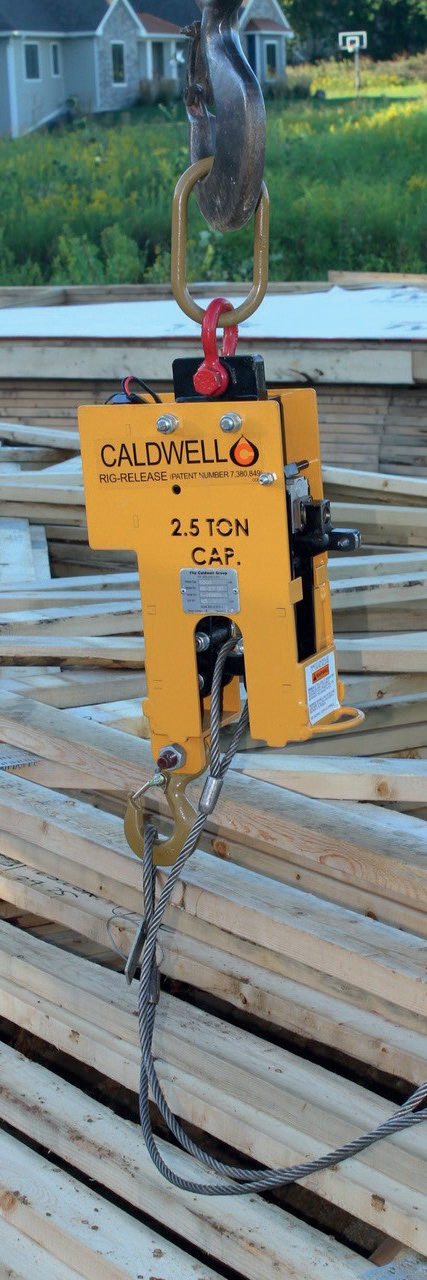Below the hook: No-release claws
12 January 2023In the first edition of a new column designed to help users select the right tool for the job, Darrin Noe, director of sales and marketing at The Caldwell Group, explores hooks that cannot release rigging while loaded.
Whether you call products lifters, lifting attachments or something else, the below-the-hook industry is still rapidly evolving. In fact, there are many solutions that people might not know as well as they think they do – or at all – which gives columns like this an opportunity to raise awareness so readers can become better at choosing the right tool.
Working with trade media dovetails with ongoing efforts to make our channel partners and end users more aware of the solutions that are out there. We have countless conversations where an engineer in a specialised field will be surprised at the breadth of lifter available and the capabilities of each.
Hooks are a good example. Caldwell, for instance, provides two versions that are designed so they cannot release rigging while loaded: manual and radio-controlled.
You can get the manual-releasing version with an up to 20-ton capacity and a remote-releasing 2.5- or 5.0-ton models. Manufacturers can customise this type of product, but the standard options tend to meet demand. Both versions are easy to rig, lift, set and release and can come with a lock-and capture feature that can engage with small load weights for optimal safety.
It is the radio-controlled versions that really get people talking, despite having been around for decades. What makes them feel like new products is that industry is constantly finding new uses and applications.
Such products are typically designed for rugged, outdoor use, but just as many people use them in indoor production and manufacturing environments.
The development started with a target market for construction crane applications, but we, for example, have sold units to a company that loads large heating, ventilation, and air-conditioning (HVAC) systems on trailers that didn’t want their employees going up on ladders to remove rigging.
We’ve seen applications where multiple hooks are used together to empty medical waste bins, and they’ve even been used underwater, where a customer was setting rebar and other gear on the seabed.
A user might want four hooks on a four-point beam that are set to release in coordination with each other or, with simple programming, release in a different sequence. It is all possible.
The standout safety advantage is that the product is designed not to release under load. It is physically unable to release until the load has been set. We’ve had contact from movie companies wanting to use it, but strategically drop a load. In those cases we’ve had to say “no”.
Operating at a safe distance from a lift is another benefit. A crane operator can release rigging once set using the remote control, all from the safety of the cab or a safe place on the shop floor. Nobody under the load; nobody near the lift; nobody climbing to release rigging.
Modern products arrive with rechargeable batteries, chargers and vehicle adapters. The batteries might be designed to last an eight-hour shift, depending on the frequency of operation. Once out of the box, set-up on the hook or spreader beam is easy.
One of the challenges with the product, ironically, arose because of its efficiency. In many geographies and industries, pay-per-hour is a historical variable used to determine price. So, $100 per hour for a six-hour job is $600.
Remote-releasing hooks, however, make it a three-hour or $300 job. We suggest that these folks look at the job as a project cost: $400 to $500 would leave both parties happy.
Further, where a crane operator might previously have combined with two workers supporting a long load and a person in the middle that releases rigging, at least one of them can be eliminated. The product is calculated to be three to five times less expensive than some other, similar concepts.
“You can bring it along every time and charge me extra for it, if you need to,” one user told a contractor recently.
